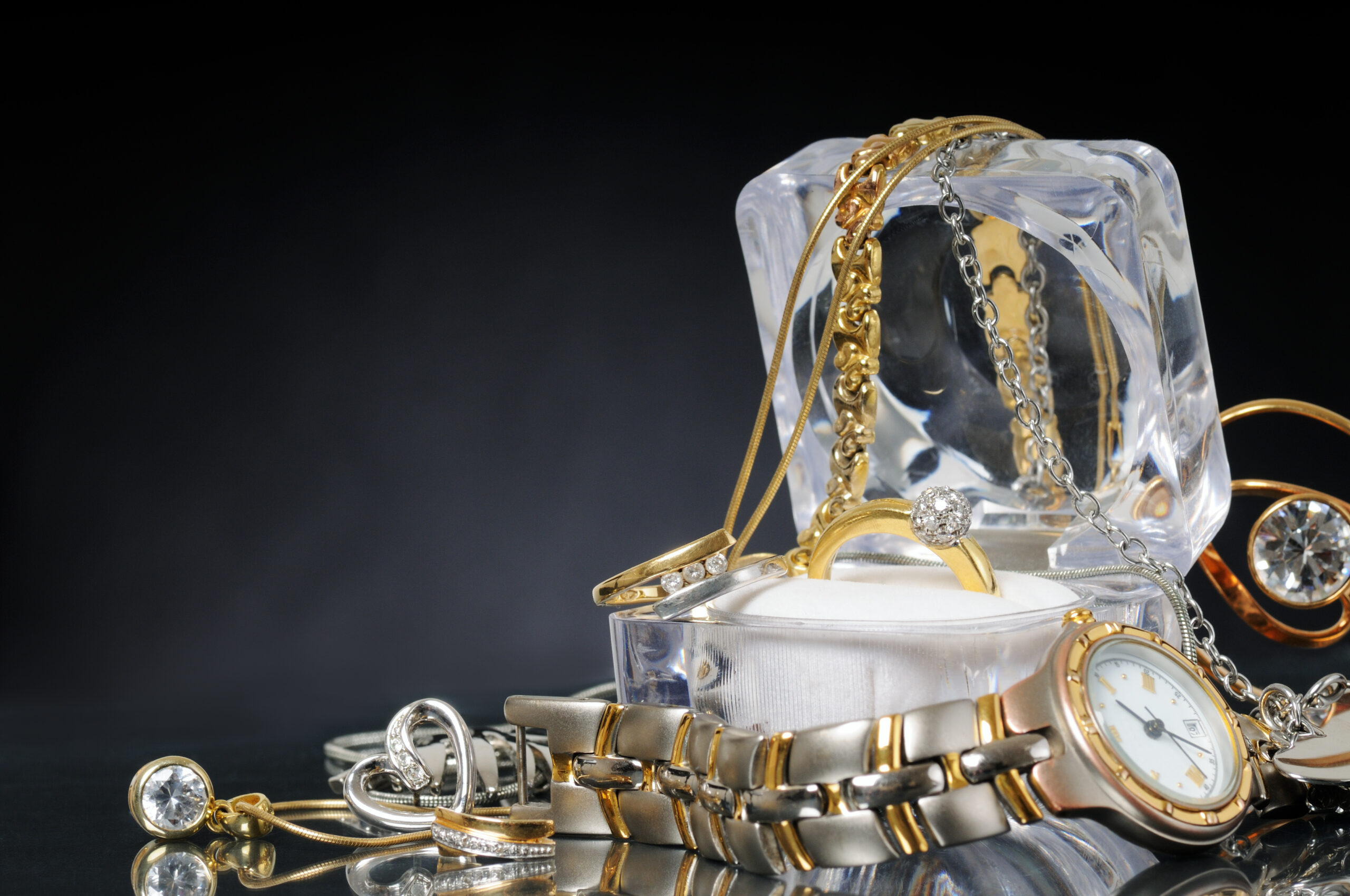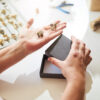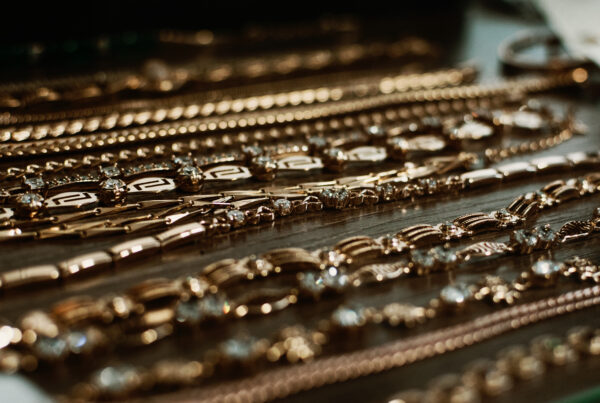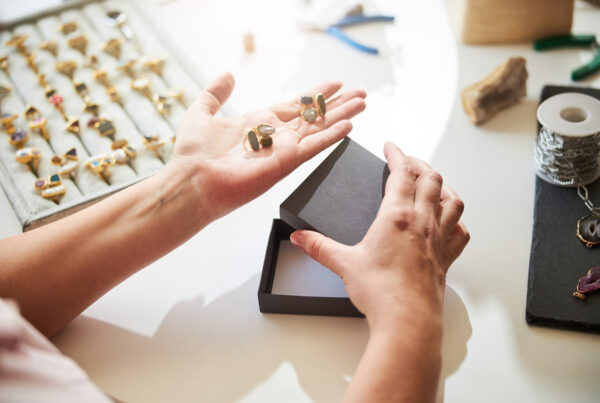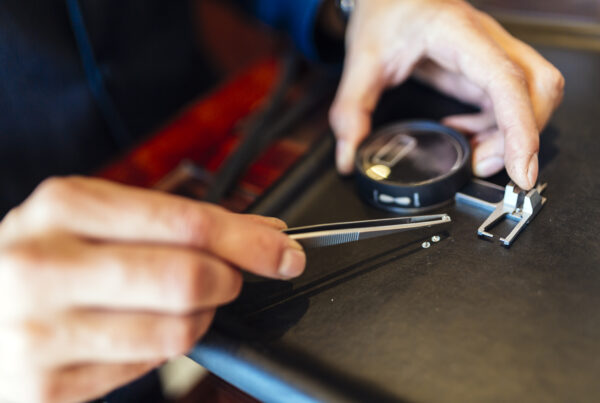Over the past couple of months while I was interacting with some of my customers I have notice a trend in quite of few items they brought to me for evaluation. Many of them have been taken back when I told them that the gold or silver they have valued for years but now want to sell is not as pure as they had thought, but a plated version of these precious jewels. Unfortunately I could not buy the jewellery from them for we melt the gold and silver and reenter them into the recycled gold and silver market. However to not let them leave empty handed I encourage them that some of those piece of jewellery were still beautiful, so do not let anyone know that they are plated and where them with pride. I also gave them tips on how to purchase fine jewellery the next time they decided to.
TIP 1
The mostly simplest way to test and prove that what you are purchasing is authentic is to take with you a magnet. Sound silly, but pure gold, pure silver and variations of them are neither positively nor negatively drawn towards or propel from magnets. If it is, it has some element of or combination of steel underneath a layer of Gold or Silver. The stronger the movement towards or away the less plated the mental is with Gold or Silver. Stay away from plated jewellery much as possible, it may look pretty, but it is not pure.
Note: If it does not move, be cautious look for “EP” electronic plated or “GF” gold filled markings
TIP 2
Do you know that most pure Gold and Silver and platinum jewelery has a stamp on them? These stamps are called Hallmarks. A hallmark is an official mark or series of marks struck on items made of precious metals. The purpose of Hallmarks is to guarantee of certain purity or fineness of the metal as determined by formal metal (assay) testing and to try to protect consumers from unscrupulous jewelers
Most countries around the world are beginning to implementing laws making it mandatory that all Jewellery be stamp with a Hallmark, unfortunately the Law in Canada right now does not make it illegal to sell non-hallmarked jewellery
A common hallmark for gold would be a 10k, 14k, 18k, 22k or even 24k marks
Our suggestion to you is to stay clear of purchasing any non-hallmark pieces of Jewellery. If it is custom made and/or already own/inherited:
1. Put a magnet beside it (see previous blog – Tip 1)
2. Bring to your closest respectable Jewellery expert
BUYING GOLD AND SILVER – TIP 3
Looking for Trademarks
While hallmarks are not always required on finished works of jewellery, they are, however, deemed necessary when a jeweller or manufacturer wants to put a purity stamp on a piece. If a piece of Jewellery has a hallmark, the law requires that piece also bear a trademark.
In Canada, the law stipulates that any hallmark applied to an item made of precious metal must be accompanied by a trademark which is subject to an application for registration or which is a mark registered with Canada’s “Registrar of Trade-marks.”
The law also stipulates that an item made of precious metal may also be sold legally in Canada without a hallmark or a trademark.
A Trademarks can serve as a tell tale sign whether a piece of jewelry should be purchased or not. It is recommends that buyers steer clear of piece of gold that have karat marks, but no identifiable trademarks included. This is a good rule of thumb for newer purchases, but not necessarily on antique pieces. Not all early crafters added their artisan signatures to their creations.
Have you ever seen a masterpiece painting without the artist signature? The same rule applies when you purchasing Gold and Silver. Always look for the artisan’s signature mark which is called a trademark!
TIP TO BUYING GOLD AND SILVER – TIP 4
Understanding the level of purity of Gold and Silver
I took the time to list the common markings of Gold and Silver, so you could have the tool of knowledge when you enter into a transaction of purchase a ring, bracelet, ear ring, necklace, watch etc. Gold hallmarks are measure by Karat or Carat (symbol: K or kt) is a unit of purity for gold alloys. The purer the gold the higher the karat or numerical amount are. Silver can be determined the same way. The purer the gold or silver the more costly that piece of Jewellery should be.
Common Hallmarks
| North American and British Hallmarks | European Numerical Hallmarks |
| 9k / 9kt / 9ct | 375 or 37.5 % Gold |
| 10k / 10kt / 10ct | 417 or 41.7 % Gold |
| 14k / 14kt / 14ct | 585 or 58.5 % Gold |
| 18k / 18kt / 18ct | 750 or 75 % Gold |
| 22k / 22kt / 22ct | 917 or 91.7 % Gold |
| 24k / 24kt / 24ct | 999 or 99.9 % Gold |
| Silver Hallmarks |
| 999 or 99.9 % Pure Silver |
| 925 or 92.5 % Sterling Silver |
| 900 or 90.0 % Silver |
| 800 or 80.0 % Silver |
Tip to Buying Gold and Silver – TIP 5
Up selling by retailers
“What is the true cost of my jewellery?” has been one of the most frequent questions asked by my clients.
This question arises when they are shocked at the melted value of their jewellery compared to the price they paid for it originally. Their astonishment is understandable since they come with a certain level of expectation. What I tell my clients is when they purchase their precious ring, bracelet, chain, or earrings, the price they paid includes hidden costs for the item such as overhead, labour, and custom design or branding totalling about 300% to 400% mark-up. They are actually paying for the jewellery plus these hidden costs. This phenomenon is not unusual but is practiced right across the board with all jewellers. Now when our client comes to us we calculate the current market value of gold or silver with no hidden fees. We actually weight their pieces and calculate a fair rate so it is a WIN-WIN transaction between us and our clients.
Buying Gold and Silver – TIP 6
Understanding the Commodity Market
Gold and Silver is a Commodity. That means that they are marketable raw or primary good produced to satisfy wants or needs. Their supply and demand are part of a universal market that comes without qualitative differentiation, which means that it is not possible to tell which country or company produced it (unless stamped) and its price is determined by the market as a whole, which means its price is the same regardless of what country you are in (in theory). Without going into the complex summary of how commodities are traded, the take home here is that whenever and wherever you buy your gold or silver the retailer has a standard or base rate to conduct the transaction with you. That base rate is pre-determined by the standard market and the Karat of that specific metal (see TIP 4). It is such a great feeling when you purchase a fine piece of jewellery, but it is far more greater when you enter the transaction more informed and leave with more bang for your buck.

